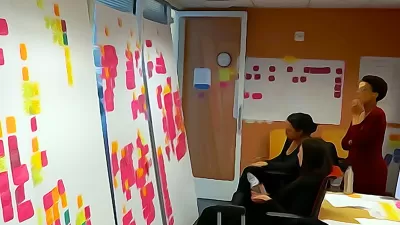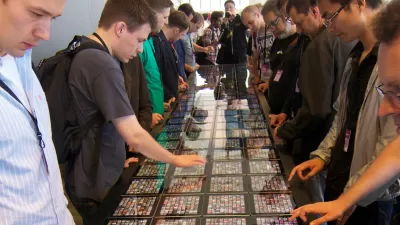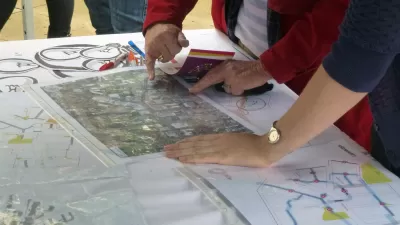A new generative tool developed by Sidewalk Labs uses machine learning and computational design to generate millions of comprehensive planning scenarios.
Violet Whitney shares news of a new generative design tool developed by the team at Sidewalk Labs, including the demo video shared above.
Whitney describes the need for the project as follows:
Today, the various experts on a planning team often run separate analyses to produce a neighborhood design: an architect uses one type of software to simulate sunlight, an engineer uses another to plan streets, a real estate developer models economics in a spreadsheet, and so on. The time and cost needed to coordinate all these competing elements often means a project can only afford to develop a handful of designs for the project team, with limited insight into how these options will impact the community.
The new tool does two things previously unavailable among design software options:
First, using machine learning and computational design, it can help planners generate not just one or two but millions of comprehensive planning scenarios. Second, it can help evaluate all kinds of impacts these different scenarios could have on key quality-of-life measures, producing a set of options that best reflects a community’s priorities.
The article includes a case study, set in a two-block urban area—to show how the new generative tool works. The post also imagines that this kind of generative design tool could eventually become a powerful tool of community engagement.
FULL STORY: A first step toward the future of neighborhood design

Trump Administration Could Effectively End Housing Voucher Program
Federal officials are eyeing major cuts to the Section 8 program that helps millions of low-income households pay rent.

Planetizen Federal Action Tracker
A weekly monitor of how Trump’s orders and actions are impacting planners and planning in America.

Ken Jennings Launches Transit Web Series
The Jeopardy champ wants you to ride public transit.

Crime Continues to Drop on Philly, San Francisco Transit Systems
SEPTA and BART both saw significant declines in violent crime in the first quarter of 2025.

How South LA Green Spaces Power Community Health and Hope
Green spaces like South L.A. Wetlands Park are helping South Los Angeles residents promote healthy lifestyles, build community, and advocate for improvements that reflect local needs in historically underserved neighborhoods.

Sacramento Plans ‘Quick-Build’ Road Safety Projects
The city wants to accelerate small-scale safety improvements that use low-cost equipment to make an impact at dangerous intersections.
Urban Design for Planners 1: Software Tools
This six-course series explores essential urban design concepts using open source software and equips planners with the tools they need to participate fully in the urban design process.
Planning for Universal Design
Learn the tools for implementing Universal Design in planning regulations.
Heyer Gruel & Associates PA
Ada County Highway District
Institute for Housing and Urban Development Studies (IHS)
City of Grandview
Harvard GSD Executive Education
Toledo-Lucas County Plan Commissions
Salt Lake City
NYU Wagner Graduate School of Public Service





























